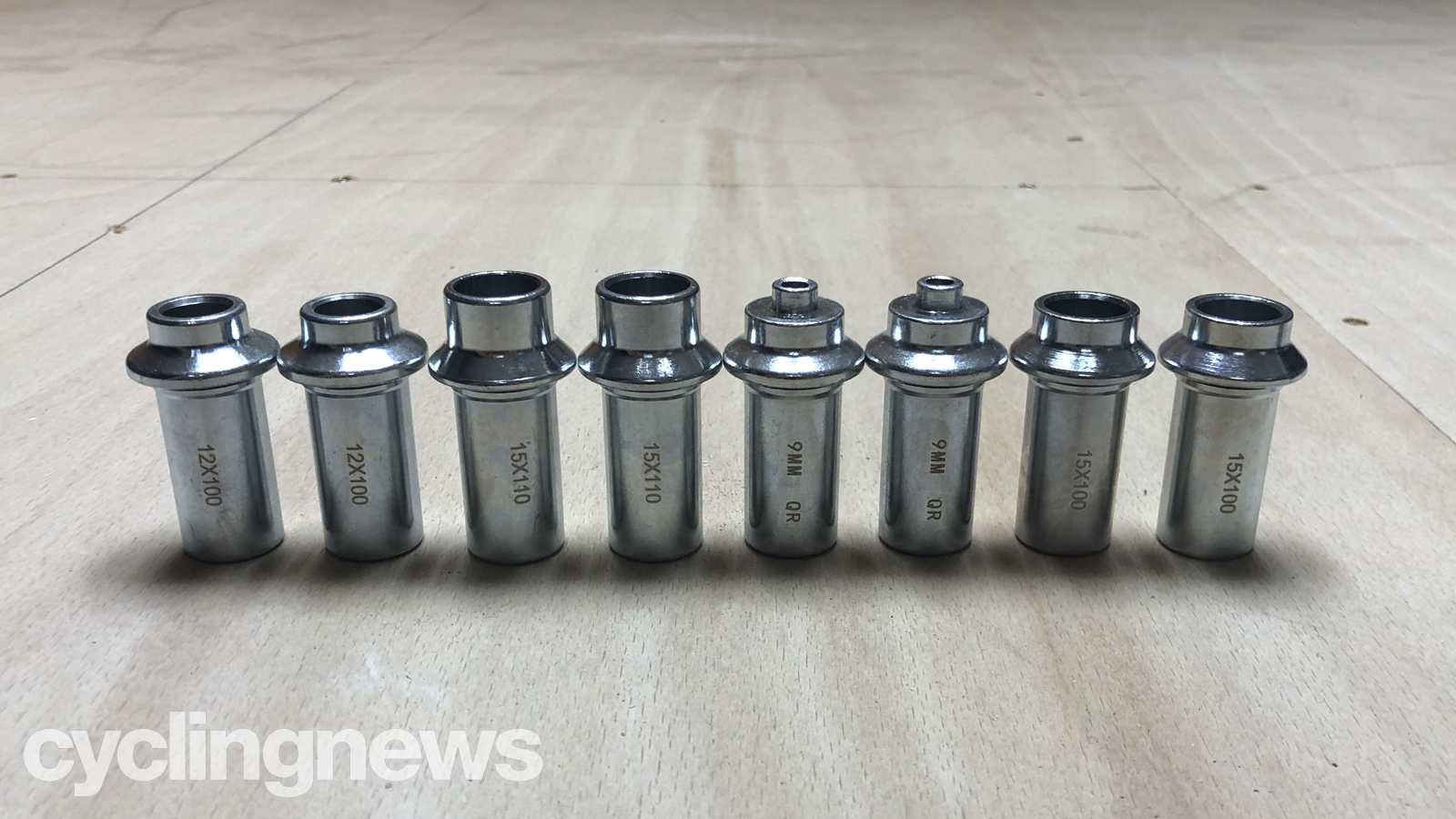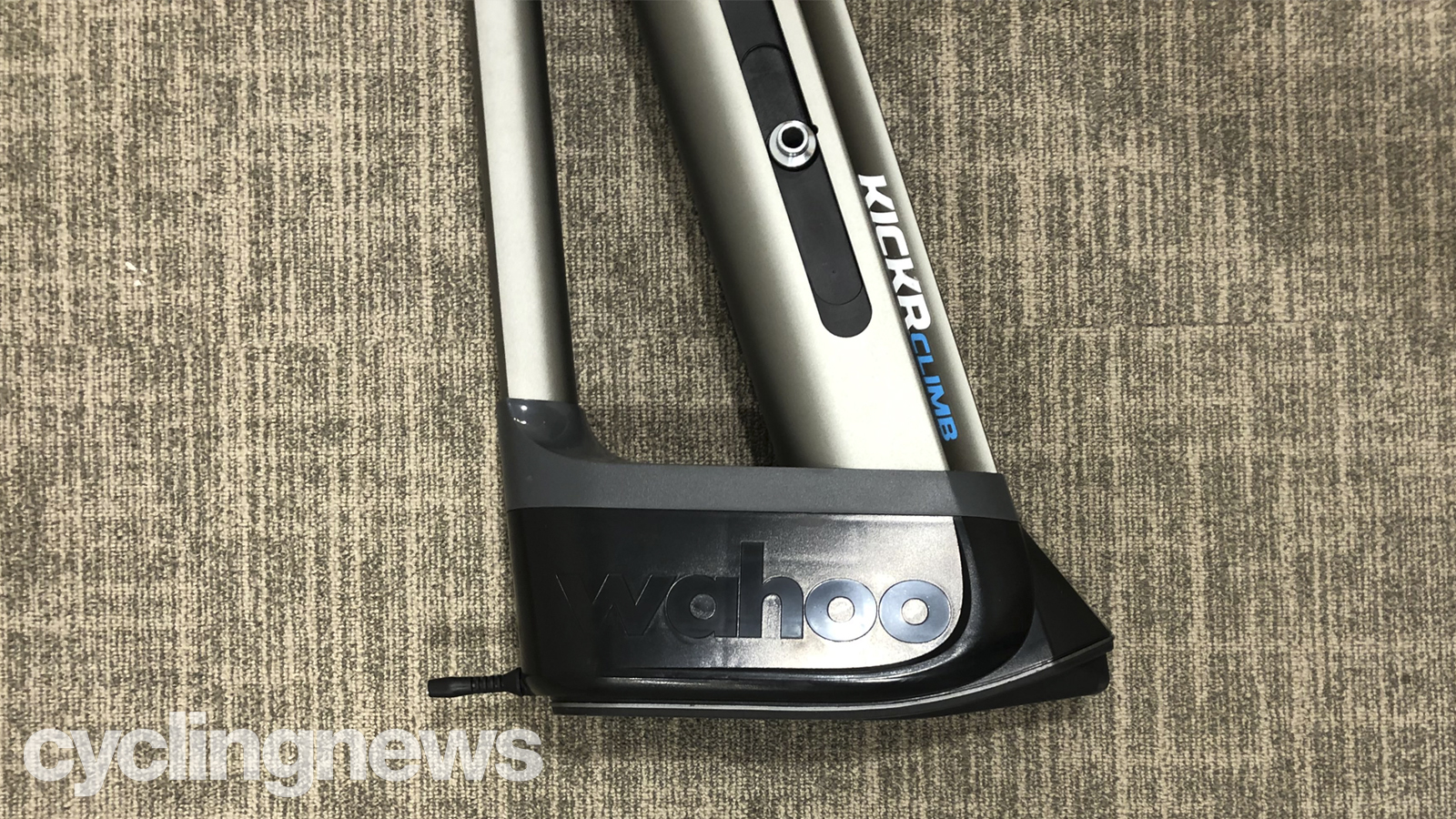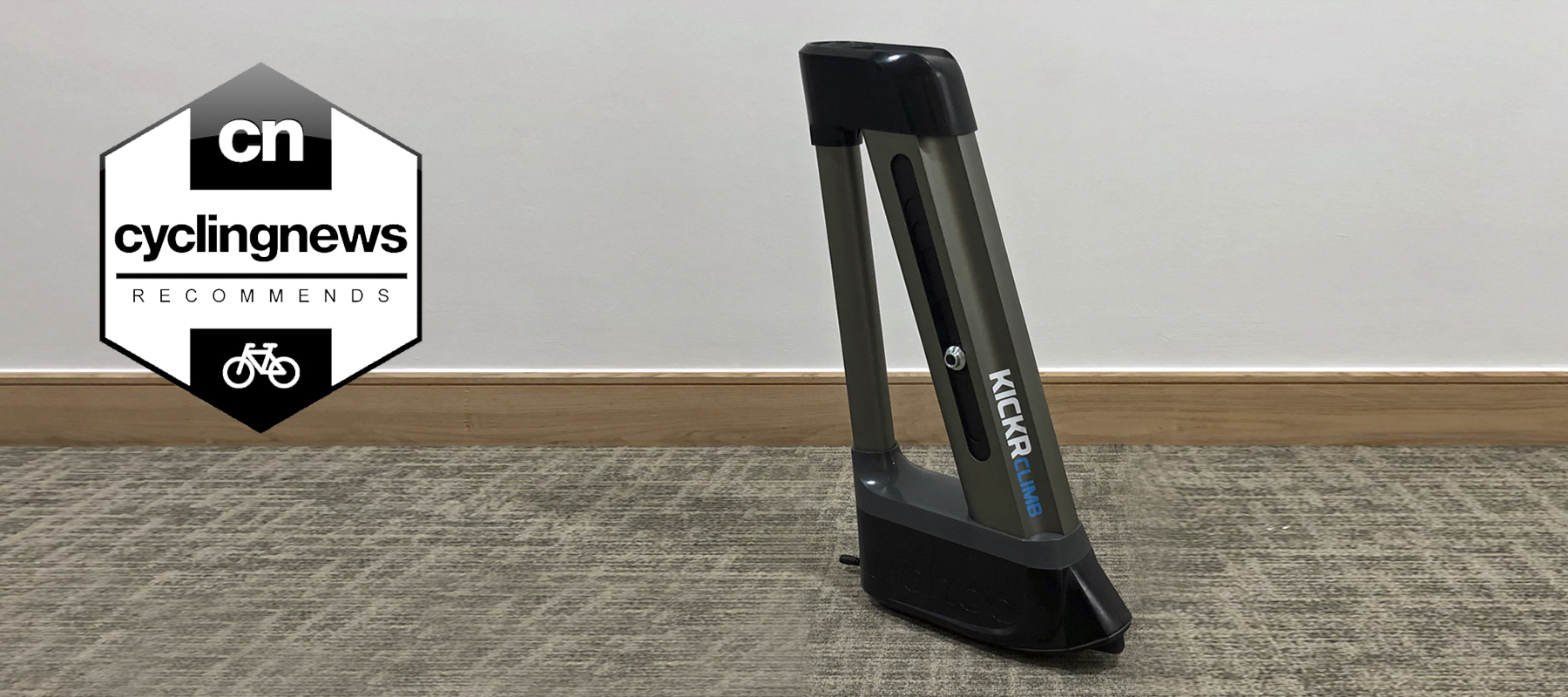Cyclingnews Verdict
The Wahoo Kickr Climb is a luxury addition to your pain cave, but for those looking to train for a specific event, it really could be the key to success.
Pros
- +
Fast enough to keep up with fast terrain change
- +
Controlled enough to avoid bucking the front of your bike
Cons
- -
Adjusts with 'trainer difficulty'
- -
Doesn't feel as locked-in as a front wheel
- -
Price
You can trust Cyclingnews
The Kickr Climb is a device that raises and lowers the front of your bike, simulating climbs of up to 20%, and descents of -10%, in a bid to replicate the outside experience as closely as possible during indoor cycling. However, for just shy of £500, it's likely to be a highly-considered investment.
Features
For me, where the Kickr Climb comes into its own is in event-specific training sessions, and during competitive Zwift events. During Zwift workouts, the Climb is locked, but during open efforts such as races or free-riding, it serves as an excellent physical warning of an upcoming climb.
Note, you'll need to turn the trainer difficulty setting up to 100% in Zwift for it to adjust on a 1:1 ratio. A trainer difficulty of 50% will adjust at a 2:1 ratio (meaning that for a 10% in-game gradient, your Kickr will simulate 5%) and so on. It would be preferable to have independent controls for the two.
I'm not someone who knows every Zwift course by heart, and it can be particularly easy to miss an upcoming ascent, especially when using a small iPhone screen, as I often do. The number in the corner is small enough on such a screen to be difficult to consume while racing and, as such, the Kickr Climb's instant adjustment is the best indicator that hard times are coming, enabling you to attack the effort and stay on top of your gear – something that's particularly helpful in racing situations.
The other scenario where the Kickr Climb is beneficial is for those with a target event. The Kickr Climb offers up to a 20% incline, meaning rather than just adding resistance to simulate gradient, the literal elevation forces you to use the same muscle groups that will be stressed come race day.
It's tough to find a long 20% climb in most areas of the world without travelling or riding to get there first. If you're training for a hilly sportive, the national hill climb championships, or just your upcoming holiday in the Alps, the Kickr Climb's ability to immediately set you at the necessary gradient of your event will enable quick, effective, and structured workouts.
Paired with a GPX file and the necessary software, the Kickr Climb can allow you to physically replicate any mountain, climb or berg, within the comfort of your home. Nothing will replicate the real-world experience of climbing Mont Ventoux, but you no longer need to fly to France in order to train on a Ventoux-sized climb.
Design
Like the Wahoo Kickr turbo trainer, a selection of wheel adaptors is included with the Climb. These include QR, 12x100mm, 15x100mm and 15x110mm, and the shape of the frame is recessed to allow for disc-brake caliper clearance.
Upon rocking the handlebars left and right, there is still a modicum of motion that leaves you feeling the axle isn't bolted correctly. We're assured it's normal, and after a winter of testing, it hasn't escalated to a problem or damage.

The Kickr Climb is quiet, too. There’s a faint whirr when the motor is in action; certainly not enough to wake your housemates, and even the best turbo trainers will be loud enough to drown it out.
The construction itself is solid; there's a heavy, rubberised base which makes for a planted feel. Paired with the Kickr turbo trainer, there's no feeling of imbalance, even when out-of-the-saddle sprinting or at the maximum 20% incline. The base is curved, too, which basically means there's no fore-aft stress put on your fork as you transition through the gradients. That said, the base of the Climb does work itself back and forth over time as the incline changes. The higher it goes, the further back it moves.

There's a pretty hefty external power block which makes for an untidy aesthetic – a small issue, I know, but one worth considering for such a premium product.
The rise-and-fall of the front end comes courtesy of a sliding carriage which is operated by a motor and a toothed belt. The top of the Climb includes a port for the wired remote control, which can be removed and extended on a coiled wire and affixed to your handlebars if manual control is more your thing.

Gradient changes come in steps at each whole-number percentage increase in your chosen indoor cycling app, rather than a more linear grade. Of course, infinite gradient points would be quite data-intensive as you cycle through infinite terrain of virtual worlds. The whole-numbers are more than incremental enough for a realistic road feel, and the actual movement of the Climb is smooth, rather than jerky. Even on the rolling roads of certain Zwift courses, the Climb keeps up with the gradient changes without becoming a bucking bronco.
Verdict
Like the Kickr Headwind, and to a lesser extent the Kickr turbo trainer, the Kickr Climb is very much a luxury in that it's not essential to achieve a successful indoor training session. However, unlike the others, there's nothing out there that can do an almost-as-good job for less spend.
At £499.99 / US$599.99 / AU$799.99 / €549.99, it's hard to justify it as a value-for-money proposition, but if you're looking to increase that real-ride feel (while remaining indoors), the Kickr Climb arguably offers more realism than any piece of software can. The physical benefits of using the Climb are genuine; different muscle groups are tested as if you were riding real ascents. If you live in an area of the world where the landscape is flat, it could be the only climb within hundreds of miles.
For the casual indoor cyclist, the potential benefits might not seem worthy of the investment, but for the dedicated indoor warrior looking for the biggest training stimulus, the Climb should be the next addition to your indoor training arsenal.

Josh is Associate Editor of Cyclingnews – leading our content on the best bikes, kit and the latest breaking tech stories from the pro peloton. He has been with us since the summer of 2019 and throughout that time he's covered everything from buyer's guides and deals to the latest tech news and reviews.
On the bike, Josh has been riding and racing for over 15 years. He started out racing cross country in his teens back when 26-inch wheels and triple chainsets were still mainstream, but he found favour in road racing in his early 20s, racing at a local and national level for Somerset-based Team Tor 2000. These days he rides indoors for convenience and fitness, and outdoors for fun on road, gravel, 'cross and cross-country bikes, the latter usually with his two dogs in tow.
